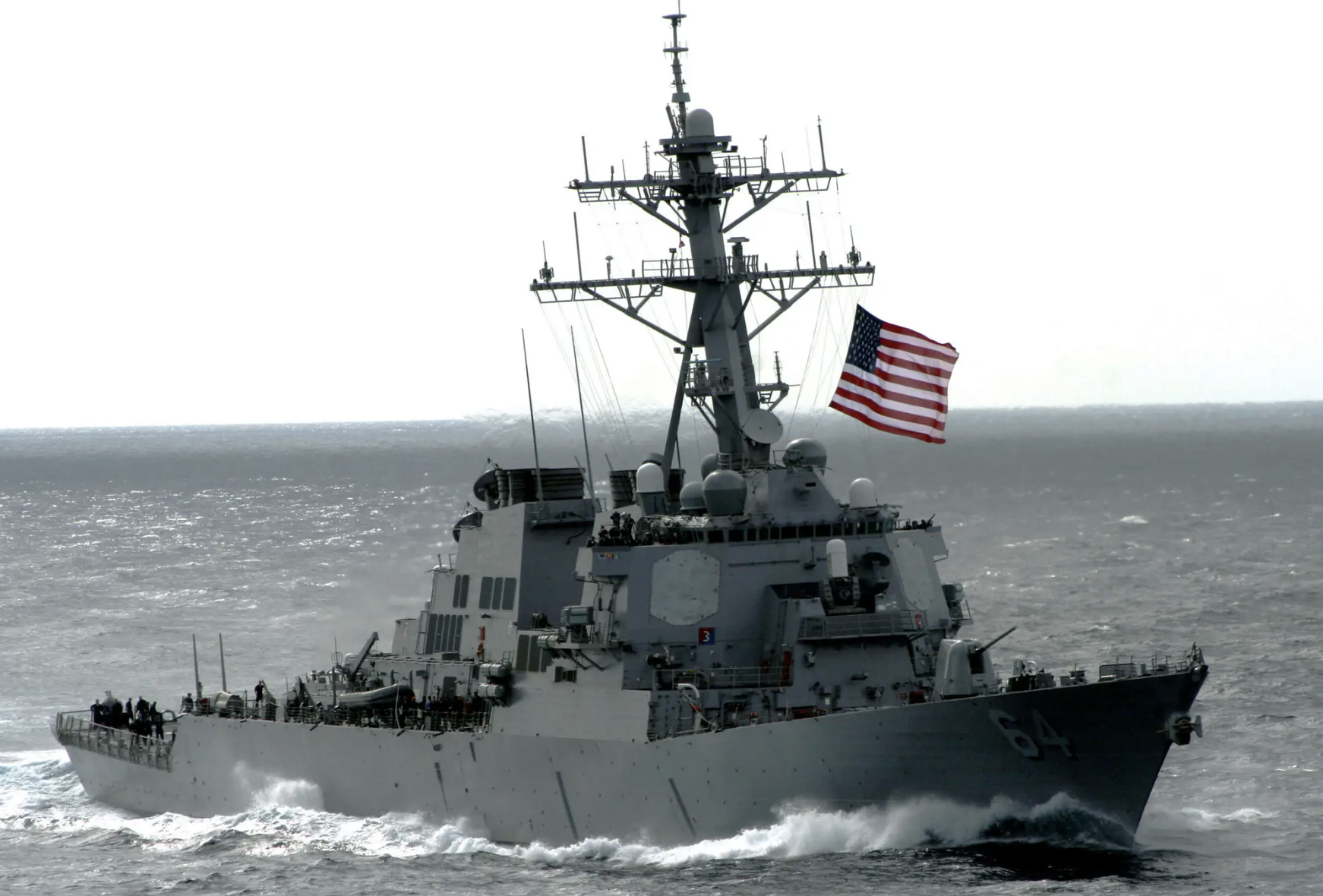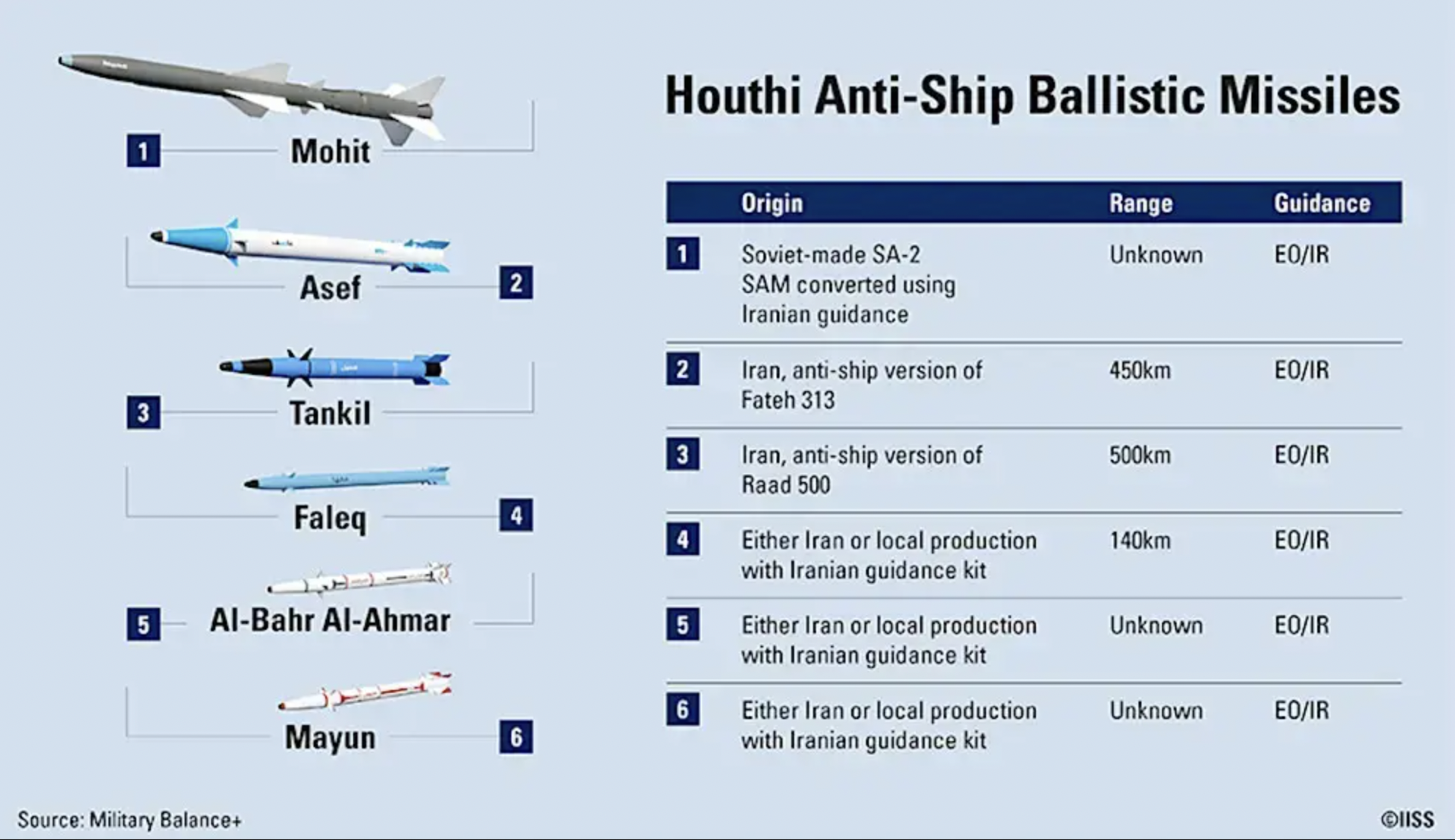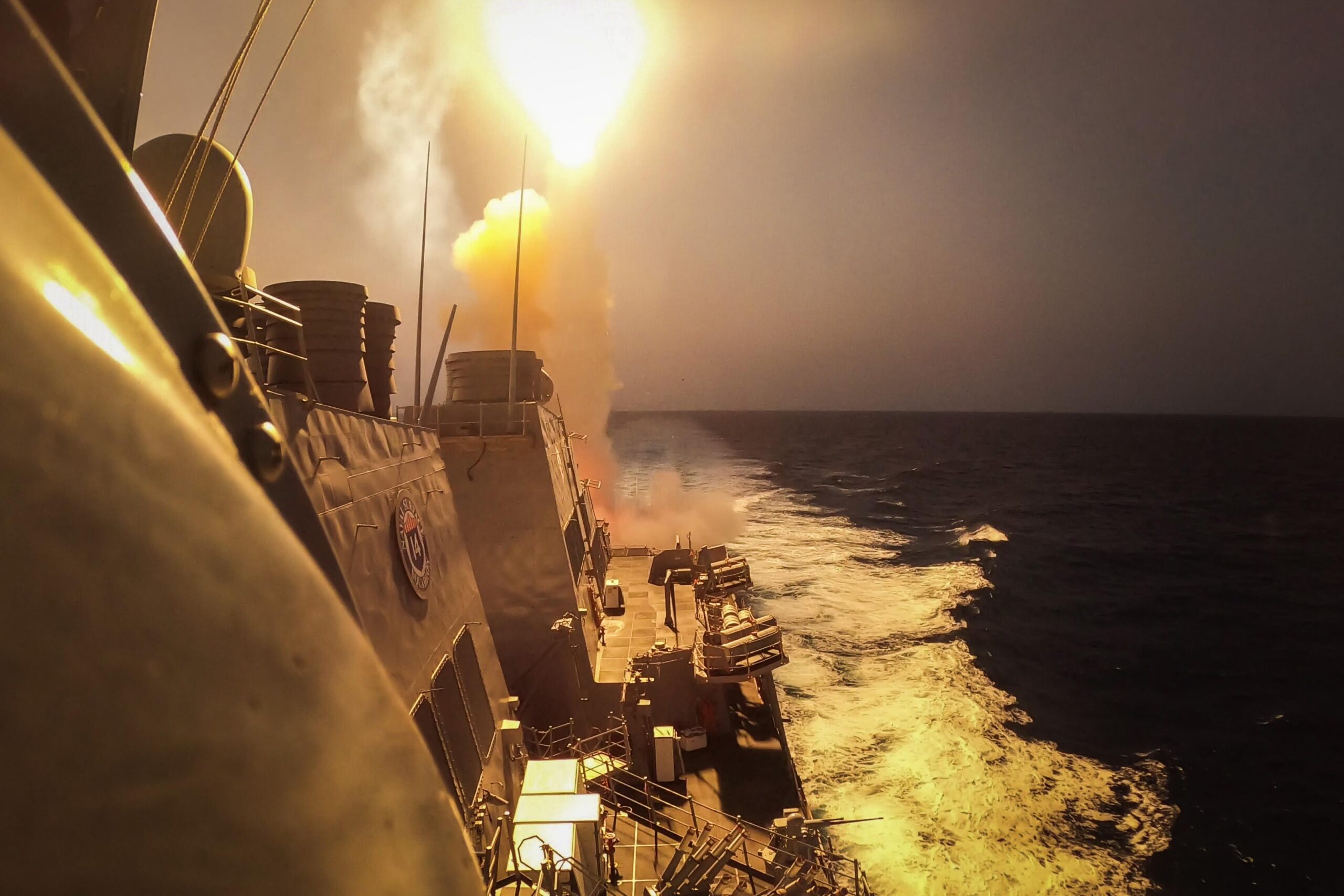A U.S. Navy destroyer was forced to defend itself today after it came under direct attack from a Houthi anti-ship ballistic missile (ASBM). According to one U.S. military source, this is the first time a U.S. warship has been unequivocally targeted by the Yemen-based militants since the start of Israel’s war on Hamas in the Gaza Strip, although this appears to be at odds with some previous statements.
Regardless, in the last two days, the U.S. Navy has been called into action more than once as the Houthis keep up their campaign directed primarily against shipping in and around the Red Sea, leading to significant disruption to global trade.

At approximately 1:30 p.m. (Sanaa time) today, the Houthis fired a single ASBM from a Houthi-controlled area of Yemen toward the Arleigh Burke class destroyer USS Carney (DDG-64) in the Gulf of Aden, according to U.S. Central Command (CENTCOM). The missile was successfully shot down by USS Carney, with no injuries or damage reported.
USS Carney has previously engaged Houthi missiles and drones on numerous occasions. It was the first warship to down Houthi weapons in the conflict when it used SM-2 missiles, and potentially other effectors to destroy multiple Houthi drones and missiles fired toward Israel in October. You can read more about those engagements here.
Photos showing apparent debris from an SM-2 or SM-6 missile, of the kind used by the U.S. Navy to intercept Houthi missiles and drones:
While the original CENTCOM statement didn’t make it immediately clear whether the USS Carney was the specific target of the ASBM fired today, a U.S. official subsequently said that the action was “the first time the Houthis [have] directly targeted a U.S. warship since the rebels began their attacks on shipping in October.”

This seems to contradict previous accounts of an attack directed against the USS Laboon (DDG-58), on January 14. Reportedly, this was the first time the Pentagon said a U.S. warship was specifically targeted. On that occasion, however, the Houthi anti-ship cruise missile was shot down by a land-based fighter, rather than by the warship itself.
Either way, as with today’s CENTCOM statement regarding the USS Carney, the Pentagon has tended to downplay the way it reports Houthi attacks in the region, apparently to avoid escalating the conflict further.
With that in mind, there could have been previous incidents in which the Houthis directly targeted U.S. warships, but which were not disclosed at the time. British officials also indicated that the U.K. Royal Navy Type 45 destroyer HMS Diamond may have come under Houthi attack earlier this month, as you can read about here.
It remains to be seen whether today’s revelation will see a change in posture from the U.S. Navy and the other participants in Operation Prosperity Guardian, the task force that protects maritime traffic in the Red Sea.
The requirement for this protection shows no signs of diminishing. Reports this evening emerged of a vessel on fire in the Gulf of Aden. The vessel, apparently a British oil tanker, was hit by a missile, according to British maritime security firm Ambrey, although none of the crew were said to be hurt.
The United Kingdom Maritime Trade Operations (UKMTO) said it had received a report of an incident 60 nautical miles southeast of Yemen’s Aden.
The Houthis have issued a statement claiming that their naval forces successfully hit “the British oil tanker Marlin Luanda” in the Gulf of Aden, causing a fire to break out.
The militants used “a number of appropriate naval missiles, the strike was direct,” a Houthi military spokesperson said.
The attempted attacks on the USS Carney and on the Marlin Luanda come after two U.S.-flagged and owned cargo ships, M/V Maersk Detroit and M/V Maersk Chesapeake, were also targeted by Houthi ASBMs in the Red Sea yesterday. The vessels were attempting to enter the Southern Red Sea via the Bab el-Mandeb Strait when they came under attack. Ship-tracking websites revealed that the cargo ships turned around and headed back to the Gulf of Aden.
Two of the ASBMs were shot down by the Arleigh Burke class destroyer USS Gravely (DDG-107), while a third missile reportedly came down in the water near the cargo ships. Again, there were no reports of damage or injuries.
Houthi leader Abdel-Malik al-Houthi has vowed that the Yemen-based militant group would keep up its campaign to target shipping in and around the Red Sea. In a televised speech yesterday, al-Houthi said that U.S.-led military efforts directed against the Houthis would not affect “our will and determination.”
The Houthi anti-shipping campaign, which has made use of ballistic missiles, cruise missiles, and drones, was launched in response to Israel’s war in Gaza and, initially at least, claimed to target Israel-linked shipping. However, those arguments have become increasingly tenuous and U.S. and allied warships are now also seen as legitimate targets.
Al-Houthi said that the current campaign would continue until aid reaches the Palestinian people in Gaza.
Earlier this week, as the attacks on Red Sea shipping continued, the United States and the United Kingdom launched a second round of strikes on Houthi targets. You can read more about those strikes here.

Meanwhile, it was announced yesterday that U.S. National Security Adviser Jake Sullivan will meet China’s Foreign Minister Wang Yi to discuss the Houthi attacks. U.S. officials confirmed that Sullivan was flying to Thailand to meet Wang.
A spokesperson for the Chinese Foreign Ministry said earlier this week that Beijing has been in “close communication with all parties concerned and making positive efforts to de-escalate” the situation in the Red Sea.
Readers now reports that China has reached out to Iran and requested they rein in their Houthi proxies, with a warning that key business between Tehran and Beijing, including large sums of oil exports, are at risk. China has so far totally sat out from intervening in the crisis around the Red Sea, opting to not take part in any maritime action to secure the critical shipping artery.
Now we will have to wait and see if China’s warning to Iran will actually work to deescalate the crisis. At this point, it appears to be the only thing that has a shot at doing so.
Contact the author: thomas@thedrive.com
